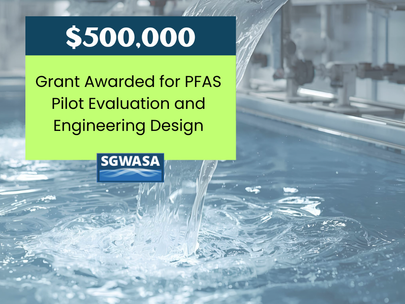Sanitary sewer overflows (SSOs) violate Sewer Permit conditions. Violations include failing to effectively manage, maintain, and operate the subject collection system so that there is no SSO to the land or surface waters and making an outlet to waters of the State. When SSOs occur, the Sewer Permit holder must report them to the North Carolina Department of Environmental Quality (“DEQ)”. Furthermore, the Sewer Permit holder must also follow specific public notification instructions for SSOs. The DEQ reviews the incident and can issue a Notice of Violation, depending on the type, extent, and duration of the SSO. The DEQ can also assess a civil penalty for the cited violations.
SSOs in the wastewater collection system are caused by many things. For example, SSOs can be caused by equipment (pumps, motors, valves, electronic) malfunctions, contractors digging into sewer pipes, rainwater entering the system via infiltration and inflow, sewer pipes collapsing and causing blockages, grease from food service industries, tree roots in the line blocking the flow, customers flushing materials down the toilet, roof drains, yard drains, and sump pumps illegally connected to the sewer system, leaking manholes, leaking pipe joints, and storm water catch basin cross-connections, just to name a few.
SGWASA’s wastewater collection suffers from many of the aforementioned examples that cause SSOs. To alleviate, and ultimately eliminate such sources leading to SSOs, aggressive maintenance programs must be instituted and funded annually. Maintenance programs include identifying sources of I&I, evaluating/grading sewer pipe systems, setting up I&I mitigation strategies, funding the mitigation strategies, and then executing the programs on an annual basis.
As a requirement of the Sewer Permit conditions, SGWASA is required to inspect 10% of its sanitary sewer system annually. These inspections help determine what areas need to be targeted for maintenance and repair. Furthermore, SGWASA has leveraged resources (grants) in the past several years to evaluate portions of the sanitary sewer system and to identify conditions and needed repairs. The most recent study was conducted in 2018-2019 by Hydrostructures. With the results of the Hydrostructures study, SGWASA staff is in a better position to determine/initiate sanitary sewer maintenance and rehabilitation programs within a certain area of the system.
However, a more comprehensive system-wide strategy also needs to be developed to truly identify sanitary sewer system maintenance needs. The more comprehensive system-wide strategy is in its initial stages of being developed, as additional technologies and methods of managing the maintenance programs are being introduced to SGWASA.


















